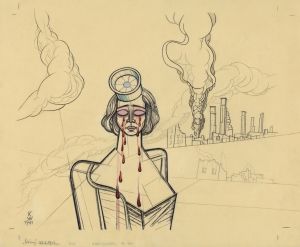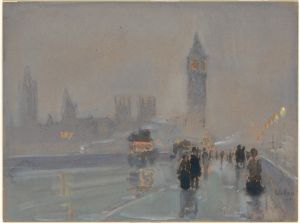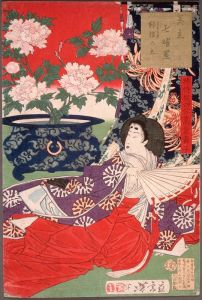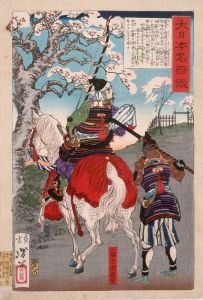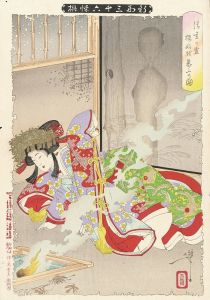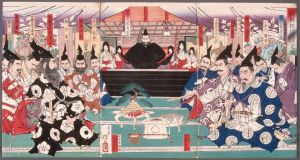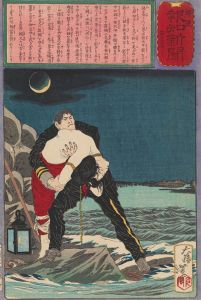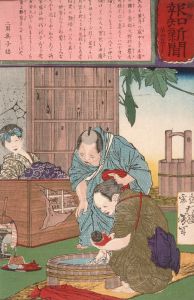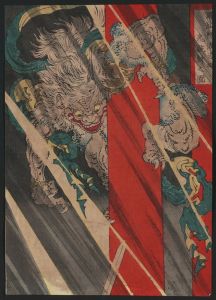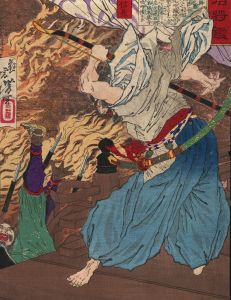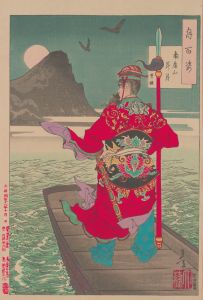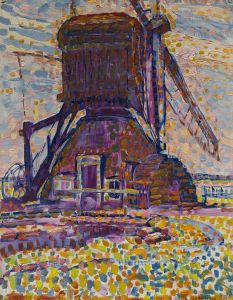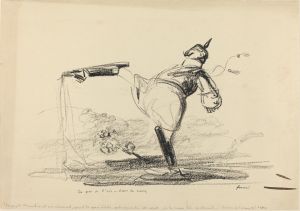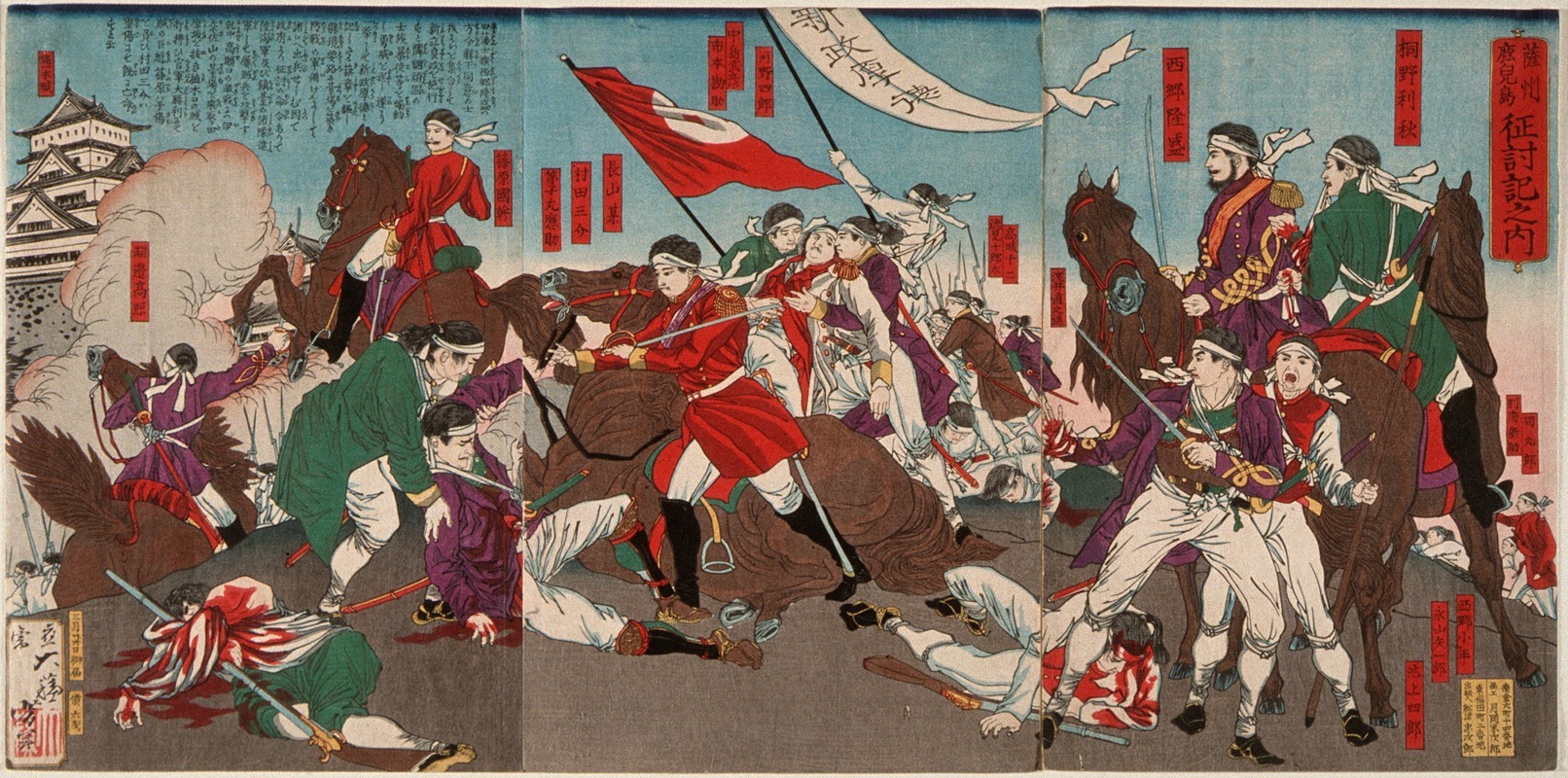
The Death of Murata Sansuke
A hand-painted replica of Tsukioka Yoshitoshi’s masterpiece The Death of Murata Sansuke, meticulously crafted by professional artists to capture the true essence of the original. Each piece is created with museum-quality canvas and rare mineral pigments, carefully painted by experienced artists with delicate brushstrokes and rich, layered colors to perfectly recreate the texture of the original artwork. Unlike machine-printed reproductions, this hand-painted version brings the painting to life, infused with the artist’s emotions and skill in every stroke. Whether for personal collection or home decoration, it instantly elevates the artistic atmosphere of any space.
Tsukioka Yoshitoshi (1839–1892) was a prominent Japanese ukiyo-e artist, renowned for his innovative and dynamic woodblock prints. One of his notable works is "The Death of Murata Sansuke," which is part of his series "Twenty-Eight Famous Murders with Verse" (Eimei Nijūhasshūku), created between 1866 and 1869. This series is known for its dramatic and often gruesome depictions of historical and legendary events, reflecting the public's fascination with the macabre during the late Edo period.
"The Death of Murata Sansuke" illustrates a scene from a well-known incident involving Murata Sansuke, a retainer of the powerful samurai Akechi Mitsuhide. The historical context of this artwork is rooted in the late 16th century during the Sengoku period, a time characterized by social upheaval, political intrigue, and near-constant military conflict in Japan. Akechi Mitsuhide is infamous for his betrayal of Oda Nobunaga, one of Japan's most powerful warlords, which led to Nobunaga's death in the Honnō-ji Incident in 1582.
In Yoshitoshi's depiction, the focus is on the dramatic and violent death of Murata Sansuke. The print captures the intense emotion and chaos of the moment, a hallmark of Yoshitoshi's style. His use of vivid colors and dynamic composition brings the scene to life, emphasizing the brutality and tension inherent in the story. Yoshitoshi was known for his ability to convey complex emotions and narratives through his art, and this piece is no exception.
The ukiyo-e tradition, which Yoshitoshi was a part of, was a genre of Japanese art that flourished from the 17th to the 19th centuries. It typically featured subjects such as kabuki actors, beautiful women, landscapes, and scenes from history and folklore. Yoshitoshi's work, however, often delved into more sensational and violent themes, which set him apart from many of his contemporaries. His prints were not only artistic expressions but also commentaries on the human condition, exploring themes of life, death, and the supernatural.
"The Death of Murata Sansuke" is a reflection of the cultural and historical milieu of its time. The late Edo period was marked by a fascination with stories of heroism, betrayal, and revenge, which were popularized through literature, theater, and art. Yoshitoshi's work tapped into this cultural zeitgeist, providing audiences with visually striking and emotionally charged interpretations of these narratives.
Yoshitoshi's influence extended beyond his lifetime, as he is often credited with revitalizing the ukiyo-e tradition during its decline in the late 19th century. His innovative techniques and bold subject matter paved the way for future generations of artists, both in Japan and internationally. Today, his works are celebrated for their artistic merit and historical significance, offering insight into the cultural landscape of Japan during a time of great change.
In summary, "The Death of Murata Sansuke" by Tsukioka Yoshitoshi is a powerful example of the artist's ability to capture the drama and emotion of historical events through the medium of ukiyo-e. It stands as a testament to Yoshitoshi's skill and his unique contribution to Japanese art, reflecting the complex interplay of history, culture, and artistic expression in the late Edo period.





